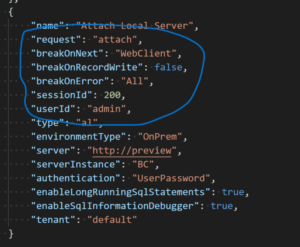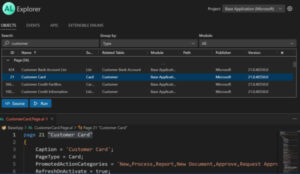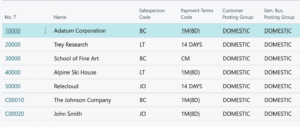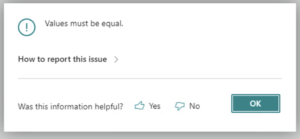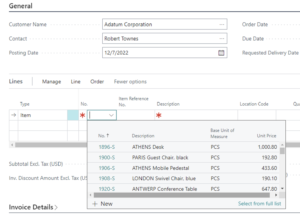With each update of Dynamics 365 Business Central, Microsoft enhances what is often referred to as the base application and enhances the development environment. Dynamics 365 Business Central 2023 Wave 1 has several exciting Development features for runtime 11.0. One of the exciting features is to Attach AL debugger to active session or next session. …
Category: Development
Mar 02 2023
Dynamics 365 Business Central 2023 Wave 1 – AL Explorer and AL Home in Visual Studio Code AL extension
With each update of Dynamics 365 Business Central, Microsoft enhances what is often referred to as the base application and enhances the development environment. Dynamics 365 Business Central 2023 Wave 1 has several exciting Development features for runtime 11.0. One of the exciting features is to AL Explorer and AL Home in Visual Studio Code …
Feb 13 2023
Using an ‘OR’ Filter in Dynamics 365 Business Central with FilterGroup(-1)
In Microsoft Dynamics 365 Business Central, a FilterGroup contains a filter set on a Record. The current filter group can be set or retrieved with the following syntax: Record Filters are set with the SetFitler, or SetRange Functions of a Record. The filters set across different groups are in effect at the same time. To work with filters in a …
Feb 07 2023
Tag a Commit with Git in VS Code
A Git Tag is a reference to a specific point in Git history. It marks specific releases or versions of your codebase, allowing easy recall of the exact code associated with that Tag. A Tag may track software version releases, identifies significant changes, or annotate a point in the project’s history. Git Tags are immutable; they cannot be changed once they …
Jan 05 2023
Dynamics 365 Business Central – TryFunction
The TryFunction attribute in AL, when developing for Microsoft Dynamics 365 Business Central, indicates that a method is a Try method. A Try method in AL enables you to handle errors that occur in the application during code execution. For example, with try methods, you can provide more user-friendly error messages or manage the execution …
Dec 29 2022
Dynamics 365 Business Central – JSON Object into a Dictionary Data Type
The Dictionary Data Type represents an unordered collection of keys and values and is optimized for fast lookup of values. Each addition to the dictionary consists of a value and its associated key. Every key in a Dictionary must be unique. It is on my list of favorite “new” AL Data Types, and I find …
Dec 27 2022
Dynamics 365 Business Central – Read a JSON File with AL
A JSON (JavaScript Object Notation) file is a standard text file used to store data in a structured, organized way. It is a simple, human-readable format often used for transmitting data between a server and a web application or between different systems. A JSON file consists of a series of key-value pairs separated by commas. …
Dec 23 2022
Real things I’m asked – add a field to the DropDown
Q: Can you add the “Search Description” to the Item DropDown? A: Yes. In Microsoft Dynamics 365 Business Central, the DropDown fieldgroup determines the fields displayed when showing records on a dropdown page. Additional fields can be added to the DropDown fieldgroup using the addlast keyword in an AL Table Extension. Base table and new fields can be added to …
Dec 13 2022
Dynamics 365 Business Central – Create a JSON File with AL
JSON (JavaScript Object Notation) is an open standard file format that uses human-readable text to store and transmit data objects consisting of attribute–value pairs and arrays (or other serializable values). In today’s digital age, the exchange of data between Microsoft Dynamics 365 Business Central and other systems is often necessary. In a previous post, I …
Dec 01 2022
Dynamics 365 Business Central – Create an XML File in AL
XML (eXtensible Markup Language) is a standard for encoding documents and is used to structure data for storage and transport. XML files are just plain text files that use custom tags to describe the structure and features of the document. Many describe the file’s structure as self-descriptive and intended to be both human and machine-readable. …

